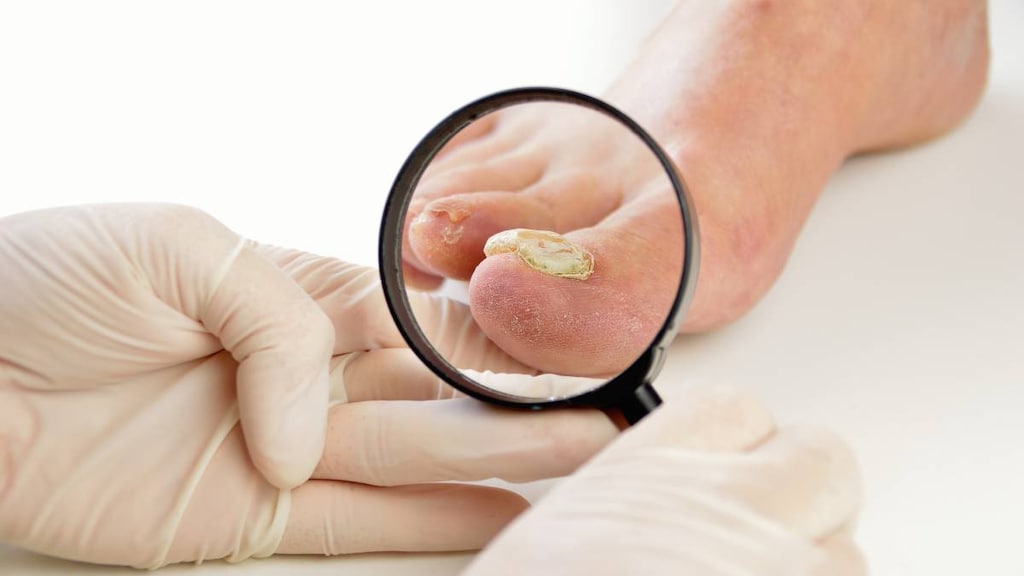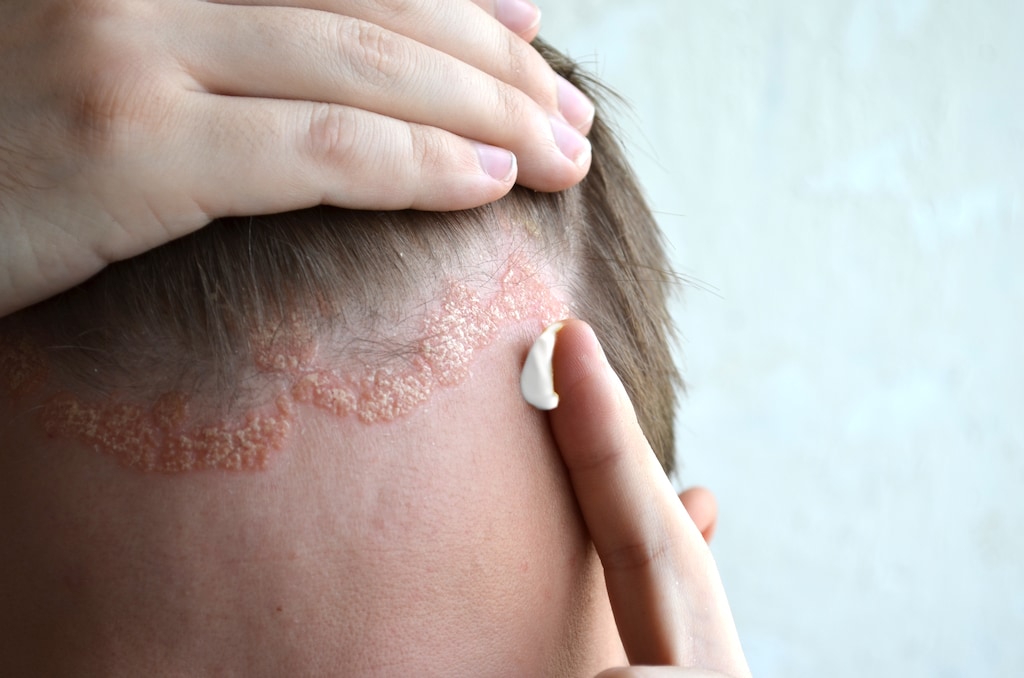Boxed Warning
Suicidal ideation and behavior:
Suicidal ideation and behavior, including completed suicides, have occurred in patients treated with brodalumab. Prior to prescribing brodalumab, weigh the potential risks and benefits in patients with a history of depression and/or suicidal ideation or behavior. Patients with new or worsening suicidal ideation and behavior should be referred to a mental health professional, as appropriate. Advise patients and caregivers to seek medical attention for manifestations of suicidal ideation or behavior, new onset or worsening depression, anxiety, or other mood changes.
Because of the observed suicidal behavior in subjects treated with brodalumab, brodalumab is available only through a restricted program under a Risk Evaluation and Mitigation Strategy (REMS) called the SILIQ REMS Program.
Dosage Forms
Excipient information presented when available (limited, particularly for generics); consult specific product labeling.
Solution Prefilled Syringe, Subcutaneous [preservative free]:
Siliq: 210 mg/1.5 mL (1.5 mL)
Pharmacology
Mechanism of Action
Brodalumab is a human monoclonal IgG2 antibody that antagonizes the interleukin-17 receptor A (IL-17RA) pathway. Brodalumab selectively binds with high affinity to IL-17RA and blocks the activity with cytokines IL-17A, IL-17C, IL-17F, IL-17A/F heterodimer, and IL-17E (IL-25) (Papp 2012). IL-17A, IL-17C, and IL-17F are elevated in psoriatic plaques. Inhibiting IL-17RA blocks cytokine-induced responses, including release of pro-inflammatory cytokines and chemokines.
Pharmacokinetics/Pharmacodynamics
Distribution
Vd: 8.9 ± 9.4 L.
Metabolism
Degraded into small peptides in a manner similar to endogenous IgG.
Excretion
Clearance: Mean (±SD) apparent total clearance (CL/F) of a 210 mg subcutaneous dose was 3.0 ± 3.5 L/day.
Time to Peak
~3 days
Use in Specific Populations
Special Populations Note
Weight: Trough concentrations were lower in subjects with higher body weight.
Use: Labeled Indications
Plaque psoriasis: Treatment of moderate to severe plaque psoriasis in adult patients who are candidates for systemic therapy or phototherapy and have failed to respond or have lost response to other systemic therapies.
Contraindications
Crohn disease
Canadian labeling: Additional contraindications (not in US labeling): Clinically significant hypersensitivity to brodalumab or any component of the formulation.
Dosage and Administration
Dosing: Adult
Plaque psoriasis: SubQ: 210 mg at weeks 0, 1, and 2, followed by 210 mg once every 2 weeks. Consider discontinuing if an adequate response is not achieved after 12 to 16 weeks (continuing treatment beyond 16 weeks in patients without an adequate response is not likely to result in greater success).
Dosing: Geriatric
Refer to adult dosing.
Reconstitution
Allow prefilled syringe to reach room temperature (~30 minutes) before injecting. Do not warm in any other way. Upon visual inspection, a few proteinaceous particles may be present, however, do not use if solution is cloudy or discolored or if foreign matter is present.
Administration
SubQ: Administer subcutaneously into the thigh, abdomen (except the 2 inch area around the navel), or outer upper arm. Do not inject into areas where the skin is tender, bruised, red, hard, thick, scaly, or affected by psoriasis. Allow prefilled syringe to reach room temperature for ~30 minutes prior to use (do not warm in any other way). Do not shake the syringe. The prefilled syringe may be self-injected in appropriate patients following proper training in subcutaneous injection technique.
Storage
Store at 2°C to 8°C (36°F to 46°F) in the original carton; do not freeze. Protect from light. Do not shake. When necessary, prefilled syringes can be stored at room temperature up to a maximum of 25°C (77°F) in the original carton for a maximum single period of 14 days with protection from light and heat sources. Once the prefilled syringe has reached room temperature, do not place back into the refrigerator. Discard after 14 days at room temperature.
Drug Interactions
Baricitinib: Immunosuppressants may enhance the immunosuppressive effect of Baricitinib. Management: Use of baricitinib in combination with potent immunosuppressants such as azathioprine or cyclosporine is not recommended. Concurrent use with antirheumatic doses of methotrexate or nonbiologic disease modifying antirheumatic drugs (DMARDs) is permitted. Consider therapy modification
BCG (Intravesical): Immunosuppressants may diminish the therapeutic effect of BCG (Intravesical). Avoid combination
Belimumab: May enhance the immunosuppressive effect of Biologic Anti-Psoriasis Agents. Avoid combination
Cladribine: May enhance the immunosuppressive effect of Immunosuppressants. Avoid combination
Coccidioides immitis Skin Test: Immunosuppressants may diminish the diagnostic effect of Coccidioides immitis Skin Test. Monitor therapy
Denosumab: May enhance the adverse/toxic effect of Immunosuppressants. Specifically, the risk for serious infections may be increased. Monitor therapy
Echinacea: May diminish the therapeutic effect of Immunosuppressants. Consider therapy modification
Fingolimod: Immunosuppressants may enhance the immunosuppressive effect of Fingolimod. Management: Avoid the concomitant use of fingolimod and other immunosuppressants when possible. If combined, monitor patients closely for additive immunosuppressant effects (eg, infections). Consider therapy modification
InFLIXimab: May enhance the immunosuppressive effect of Biologic Anti-Psoriasis Agents. Avoid combination
Leflunomide: Immunosuppressants may enhance the adverse/toxic effect of Leflunomide. Specifically, the risk for hematologic toxicity such as pancytopenia, agranulocytosis, and/or thrombocytopenia may be increased. Management: Consider not using a leflunomide loading dose in patients receiving other immunosuppressants. Patients receiving both leflunomide and another immunosuppressant should be monitored for bone marrow suppression at least monthly. Consider therapy modification
Natalizumab: Immunosuppressants may enhance the adverse/toxic effect of Natalizumab. Specifically, the risk of concurrent infection may be increased. Avoid combination
Nivolumab: Immunosuppressants may diminish the therapeutic effect of Nivolumab. Consider therapy modification
Ocrelizumab: May enhance the immunosuppressive effect of Immunosuppressants. Monitor therapy
Pidotimod: Immunosuppressants may diminish the therapeutic effect of Pidotimod. Monitor therapy
Pimecrolimus: May enhance the adverse/toxic effect of Immunosuppressants. Avoid combination
Roflumilast: May enhance the immunosuppressive effect of Immunosuppressants. Consider therapy modification
Siponimod: Immunosuppressants may enhance the immunosuppressive effect of Siponimod. Monitor therapy
Sipuleucel-T: Immunosuppressants may diminish the therapeutic effect of Sipuleucel-T. Management: Evaluate patients to see if it is medically appropriate to reduce or discontinue therapy with immunosuppressants prior to initiating sipuleucel-T therapy. Consider therapy modification
Smallpox and Monkeypox Vaccine (Live): Immunosuppressants may diminish the therapeutic effect of Smallpox and Monkeypox Vaccine (Live). Monitor therapy
Tacrolimus (Topical): May enhance the adverse/toxic effect of Immunosuppressants. Avoid combination
Tertomotide: Immunosuppressants may diminish the therapeutic effect of Tertomotide. Monitor therapy
Tofacitinib: Immunosuppressants may enhance the immunosuppressive effect of Tofacitinib. Management: Concurrent use with antirheumatic doses of methotrexate or nonbiologic disease modifying antirheumatic drugs (DMARDs) is permitted, and this warning seems particularly focused on more potent immunosuppressants. Consider therapy modification
Trastuzumab: May enhance the neutropenic effect of Immunosuppressants. Monitor therapy
Upadacitinib: Immunosuppressants may enhance the immunosuppressive effect of Upadacitinib. Avoid combination
Vaccines (Inactivated): Immunosuppressants may diminish the therapeutic effect of Vaccines (Inactivated). Management: Vaccine efficacy may be reduced. Complete all age-appropriate vaccinations at least 2 weeks prior to starting an immunosuppressant. If vaccinated during immunosuppressant therapy, revaccinate at least 3 months after immunosuppressant discontinuation. Consider therapy modification
Vaccines (Live): Immunosuppressants may enhance the adverse/toxic effect of Vaccines (Live). Immunosuppressants may diminish the therapeutic effect of Vaccines (Live). Management: Avoid use of live organism vaccines with immunosuppressants; live-attenuated vaccines should not be given for at least 3 months after immunosuppressants. Exceptions: Smallpox and Monkeypox Vaccine (Live). Avoid combination
Adverse Reactions
>10%: Infection: Infection (25%; including bronchitis, nasopharyngitis, pharyngitis, upper respiratory tract infection, urinary tract infection)
1% to 10%:
Central nervous system: Fatigue (3%)
Dermatologic: Tinea (1%; tinea cruris, tinea pedis, tinea versicolor)
Gastrointestinal: Diarrhea (2%), nausea (2%)
Hematologic & oncologic: Neutropenia (≤1%; ≥grade 3: <1%)
Immunologic: Antibody development (3%)
Infection: Fungal infection (2%), influenza (1%)
Local: Injection site reaction (2%; bleeding at injection site, bruising at injection site, erythema at injection site, injection site pruritus, pain at injection site)
Neuromuscular & skeletal: Arthralgia (5%), myalgia (2%)
Respiratory: Oropharyngeal pain (2%)
<1%, postmarketing, and/or case reports: Candidiasis (esophageal, genital, oral), conjunctivitis, Crohn's disease, exacerbation of Crohn's disease, suicidal ideation
Warnings/Precautions
Concerns related to adverse effects:
- Infections: Brodalumab may increase the risk of infections. In clinical trials, serious infections and fungal infections occurred at a higher rate in patients who received brodalumab, compared to those who received placebo. Cryptococcal meningitis has been reported (case report). Consider the risks versus benefits prior to treatment initiation in patients with a history of chronic or recurrent infection. Monitor for infections; patients should seek medical attention for signs/symptoms of a clinically important infection (acute or chronic). If a serious infection develops or is unresponsive to appropriate therapy for the infection, monitor closely and discontinue brodalumab until the infection resolves.
- Suicidal thinking/behavior: [US Boxed Warning]: Suicidal ideation and behavior, including completed suicides, have occurred with brodalumab treatment. Weigh the potential risks and benefits in patients with a history of depression and/or suicidal ideation or behavior prior to prescribing brodalumab. Refer patients with new or worsening suicidal ideation and behavior to a mental health professional, as appropriate. Advise patients and caregivers to seek medical attention for manifestations of suicidal ideation or behavior, new onset or worsening depression, anxiety, or other mood changes. Risks and benefits of continuing treatment should be evaluated in the event of suicidal behavior. Patients with a history of depression or suicidality had an increased incidence of suicidal ideation/behavior compared to those without a history. Consider discontinuing treatment if an adequate response to brodalumab therapy is not achieved within 12 to 16 weeks (due to the risk of suicidal ideation/behavior).
- Tuberculosis: Patients should be evaluated for tuberculosis (TB) infection prior to initiating therapy. Do not administer brodalumab to patients with an active TB infection. Treatment for latent TB should be administered prior to administering brodalumab. Consider anti-TB therapy prior to treatment initiation in patients with a history of latent or active TB in whom an adequate course of TB treatment cannot be confirmed. Monitor closely for signs/symptoms of active TB during and after brodalumab treatment.
Disease-related concerns:
- Crohn disease: While psoriasis studies excluded patients with active Crohn disease, Crohn disease occurred in one study participant (which led to brodalumab discontinuation). In other studies, exacerbation of Crohn disease was observed with brodalumab. Discontinue brodalumab if Crohn disease develops during treatment.
Concurrent drug therapy issues:
- Drug-drug interactions: Potentially significant interactions may exist, requiring dose or frequency adjustment, additional monitoring, and/or selection of alternative therapy. Consult drug interactions database for more detailed information
Other warnings/precautions:
- Immunizations: Avoid the use of live vaccines in patients treated with brodalumab; there is no data on the ability to elicit an immune response with live or inactive vaccines in patients receiving brodalumab.
- REMS program: [US Boxed Warning]: Due to suicidal behavior in subjects treated with brodalumab, brodalumab is available only through a restricted program under a Risk Evaluation and Mitigation Strategy (REMS) called the SILIQ REMS Program. Prescribers and pharmacies must be certified with the program and patients must sign a patient-prescriber agreement; pharmacies can only dispense to patients who are authorized to receive brodalumab. Further information is available at http://www.SILIQREMS.com or at 855-511-6135.
Monitoring Parameters
Evaluate for tuberculosis infection (prior to treatment). Monitor for signs of suicidal ideation or behavior; signs/symptoms of infection, including active tuberculosis.
Pregnancy
Pregnancy Considerations
Brodalumab is a humanized monoclonal antibody (IgG2). Placental transfer of human IgG is dependent upon the IgG subclass, maternal serum concentrations, birth weight, and gestational age, generally increasing as pregnancy progresses. The lowest exposure would be expected during the period of organogenesis (Palmeira 2012; Pentsuk 2009).
The American Academy of Dermatology considers brodalumab for the treatment of psoriasis to be likely acceptable for use in male patients planning to father a child (AAD-NPF [Menter 2019]).
Patient Education
- Discuss specific use of drug and side effects with patient as it relates to treatment. (HCAHPS: During this hospital stay, were you given any medicine that you had not taken before? Before giving you any new medicine, how often did hospital staff tell you what the medicine was for? How often did hospital staff describe possible side effects in a way you could understand?)
- Patient may experience joint pain, headache, mouth pain, throat pain, nausea, or injection site irritation. Have patient report immediately to prescriber signs of depression (thoughts of suicide, anxiety, emotional instability, or confusion), anxiety, agitation, irritability, mood changes, behavioral changes, bloody stools, constipation, diarrhea, fever, leaking of stool, lack of appetite, painful diarrhea, abdominal pain, abdominal cramps, fatigue, weight loss, signs of infection, skin sores, skin irritation, sweating a lot, muscle pain, muscle weakness, shortness of breath, or passing a lot of urine (HCAHPS).
- Educate patient about signs of a significant reaction (eg, wheezing; chest tightness; fever; itching; bad cough; blue skin color; seizures; or swelling of face, lips, tongue, or throat). Note: This is not a comprehensive list of all side effects. Patient should consult prescriber for additional questions.
Intended Use and Disclaimer: Should not be printed and given to patients. This information is intended to serve as a concise initial reference for health care professionals to use when discussing medications with a patient. You must ultimately rely on your own discretion, experience, and judgment in diagnosing, treating, and advising patients.




